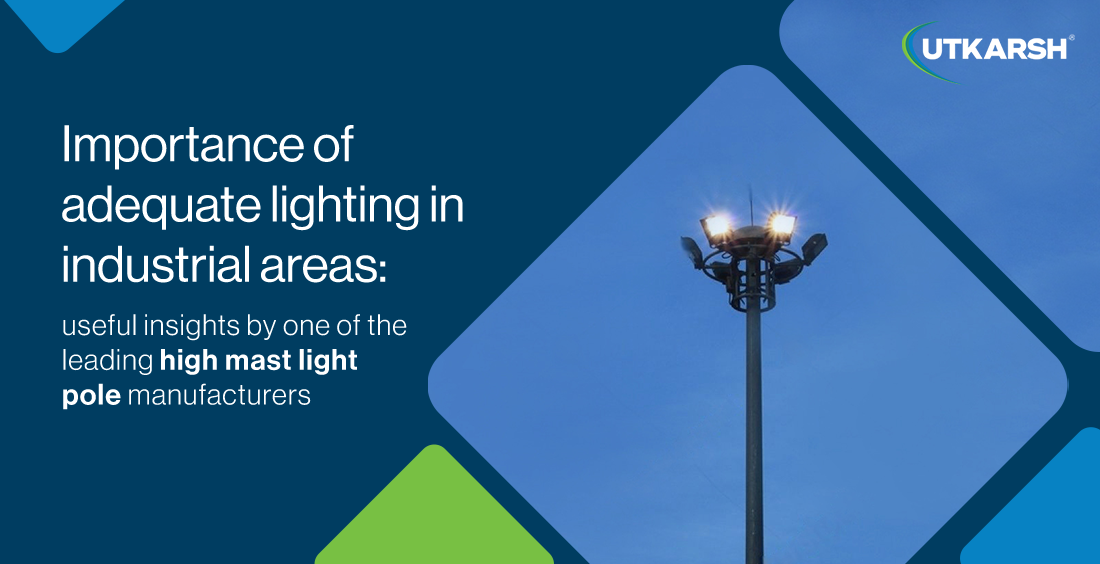Importance of adequate lighting in industrial areas: useful insights by one of the leading high mast light pole manufacturers

Lighting plays a key role in industrial spaces. Proper illumination ensures safety, boosts productivity, and improves employee well-being. Facilities such as factories, warehouses, and manufacturing plants require specialised lighting solutions. Each setting demands lighting that meets unique operational needs. As one of the leading high mast light pole manufacturers, we explore the impact of industrial lighting:
1. Safety:
Safety remains the top concern in any industrial facility. Poor lighting increases the risk of accidents. Workers may trip over obstacles or misjudge distances. Uneven floors and misplaced equipment become hazards in dim conditions. Proper lighting reduces these dangers. Employees can move around more easily and identify risks before accidents happen.
A well-lit environment helps employees work safely with machinery and materials. For example, in an assembly plant, workers must align components accurately. Insufficient light increases the risk of misalignment, which leads to defective products and potential safety issues.
Certain areas need extra attention. Stairwells, loading docks, and passageways often pose higher risks. Installing bright, uniform lighting in these locations prevents accidents. Poorly lit staircases increase the likelihood of falls. Loading docks require clear visibility to avoid collisions. Narrow corridors must remain well-lit to prevent missteps.
2. Ergonomics:
Proper lighting reduces physical strain and improves comfort. Insufficient light causes eye fatigue and discomfort. Workers squinting or straining to see develop headaches or long-term vision problems. Poor lighting can lead to awkward postures. Employees may lean too far forward or shift positions frequently. Over time, these actions contribute to musculoskeletal disorders (MSDs). Workplace injuries increase when lighting does not support visual tasks.
3. Productivity:
Employees work faster and more accurately in well-lit conditions. Clear visibility reduces errors, thereby boosting overall output. A well-lit environment promotes motivation and job satisfaction. Proper lighting also supports shift work. Many industrial facilities operate around the clock. Workers on night shifts rely heavily on artificial lighting. Bright, consistent illumination keeps them alert and reduces errors. Poor lighting at night increases fatigue and adversely impacts overall performance.
4. Compliance with regulations:
Different environments require different lighting standards. Ensuring compliance prevents legal issues and enhances worker safety. There are regulations on illumination levels for various tasks. For instance, inspection zones need high-intensity lighting to ensure accuracy. Warehouses require even distribution to avoid dark spots. Failing to meet these standards increases accident risks.
Regular lighting assessments help maintain compliance. Periodic audits identify areas needing improvement. Upgrading outdated lighting reduces hazards and aligns with legal requirements.
Looking for information on high mast poles for industrial projects?
Explore our products. We manufacture high mast poles using premium materials like TATA and SAIL steel. Each pole goes through a hot-dip galvanisation process with high-quality Zinc from Hindustan Zinc. Our high mast poles include a motorised system for easy raising and lowering, latching devices for efficient area lighting, and PU paint for corrosion protection. Designed for roadways, ports, industrial areas, and stadiums, our poles meet IS Standards and withstand wind speeds up to 300 km/h.